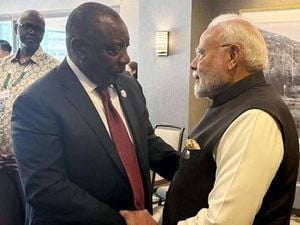As the war in Ukraine grinds into its fourth year, the conflict has taken a grim and relentless toll on the country and its people. In the latest escalation, Russian forces unleashed a barrage of rockets on the southern Ukrainian city of Zaporizhzhia overnight on September 17, 2025, wounding 20 people, including four children. The attack, which ignited fires and damaged more than 20 apartment buildings, is just the latest in a series of strikes that have battered Ukraine’s cities and infrastructure, leaving many wondering when, or if, the violence will end.
President Volodymyr Zelenskyy, addressing the nation and the world, did not mince words. He called on Ukraine’s allies for urgent protection of the European skies, underscoring the scale of the threat his country faces. According to Sky News, Zelenskyy revealed that since the start of September, Russia has used more than 3,500 drones, 190 missiles, and 2,500 aerial bombs in attacks on Ukraine. These numbers, staggering in their scope, highlight the intensity and persistence of Russia’s campaign.
“Now is the time to implement the joint protection of our European skies with a multilayered air defense system. All the technologies for this are available,” Zelenskyy declared on Telegram, as reported by the Associated Press. “We need investments and desire, we need strong actions and decisions from all our partners.” His message was clear: Ukraine cannot face this onslaught alone, and the security of the entire continent may be at stake.
The recent assault on Zaporizhzhia was particularly devastating. Ivan Fedorov, the regional head, described the aftermath on national television: “We hadn’t yet recovered from enemy strikes on August 30. We are currently repairing those buildings, those windows, but now the enemy has added more work for our municipal workers.” The city’s residents, already reeling from previous attacks, now face even more destruction and uncertainty.
Russian strikes have not been limited to Zaporizhzhia. In the Kyiv region, a civilian logistics center was hit, and in Kharkiv, a Russian drone struck the National Pharmaceutical University, wounding four people. Zelenskyy posted a video of the Kharkiv attack on Telegram, a stark reminder of the war’s reach into every corner of the country.
One of the most troubling developments has been the increasing use of Russian glide bombs and drone swarms. These weapons, often dropped from jets at high altitude and far behind the front line, pose a significant challenge for Ukrainian defenses. Glide bombs, while not particularly accurate, leave massive craters and devastation in their wake. As the Associated Press noted, Ukraine has no effective countermeasures against them, and the frequency of their use has only grown.
The threat is not confined to Ukraine’s borders. Russian drones have recently landed on Polish soil, prompting NATO to strengthen the alliance’s European air defenses. The incident has ratcheted up tensions with Moscow and underscored the potential for the conflict to spill over into neighboring countries. For many European leaders, the message is clear: what happens in Ukraine could have far-reaching consequences for the continent’s security.
Despite months of U.S.-led peace efforts, a settlement to end the war appears no closer. U.S. President Donald Trump, speaking to reporters in Washington, offered his own perspective on the conflict. “Zelenskyy is going to have to make a deal” to end the war, Trump said, though he stopped short of elaborating on what such a deal might entail. He has consistently blamed both sides for the fighting, a stance that has drawn criticism from those who see Ukraine as a nation defending itself from invasion.
Trump also reiterated his call for Europe to stop buying oil from Russia, arguing that such economic measures could force an end to the conflict. “The war would end if all NATO countries stopped buying crude from Russia and placed tariffs on China of 50% to 100% for its purchases of Russian petroleum,” he said, according to the Associated Press. His comments reflect a broader debate over the role of economic sanctions in pressuring Russia to negotiate.
Zelenskyy, for his part, has repeatedly called for tougher economic sanctions on Russia. “The only reason Russia can allow all this is that it doesn’t feel any pain,” he wrote on social media. “Until Russia experiences truly severe losses — above all economic ones — it will avoid genuine diplomacy and an end to the war.” The Ukrainian president’s words echo a growing frustration among Kyiv’s allies, who have struggled to find measures that can effectively curb Russia’s military ambitions.
In response to Russia’s relentless attacks, Ukraine has developed its own arsenal of long-range drones, which have struck deep inside Russian territory. Recent Ukrainian drone strikes have targeted oil refineries, depots, and terminals, damaging installations vital for Russia’s war effort. According to Ukraine’s General Staff, Ukrainian forces struck an oil refinery in the Saratov region of western Russia during the night of September 16-17, causing explosions and a fire. These attacks have contributed to gasoline shortages in Russia, which remains the world’s second-largest oil exporter.
The use of drones by both sides has become a defining feature of the conflict. For Ukraine, these strikes are a way to hit back at an adversary with overwhelming firepower. For Russia, the ongoing drone and missile attacks serve as both a military tactic and a tool of psychological warfare, aiming to sap Ukrainian morale and disrupt daily life.
As the war drags on, the human cost continues to mount. Civilians in cities like Zaporizhzhia, Kyiv, and Kharkiv endure daily threats to their safety, with little respite from the violence. Municipal workers labor around the clock to repair damaged buildings, only to see their efforts undone by the next wave of attacks. The resilience of the Ukrainian people is evident, but so too is the growing exhaustion and desperation.
The international community faces difficult choices. Zelenskyy’s plea for a multilayered air defense system is a call to action, but it requires not just technology and investment, but also political will. NATO’s decision to beef up air defenses following the incursion of Russian drones into Poland signals a recognition of the threat, but many question whether it will be enough to turn the tide.
Meanwhile, the debate over sanctions and economic pressure continues. While some leaders, like Trump, advocate for a hard line on Russian oil exports, others worry about the broader economic consequences for Europe and the world. The path to peace remains uncertain, and with each passing day, the stakes grow higher for Ukraine and for all of Europe.
The war in Ukraine shows no signs of abating, and the choices made by leaders in Kyiv, Moscow, Washington, and Brussels will shape the future of the region for years to come. For now, the people of Ukraine continue to endure, hoping for protection, support, and, ultimately, an end to the violence that has upended their lives.




